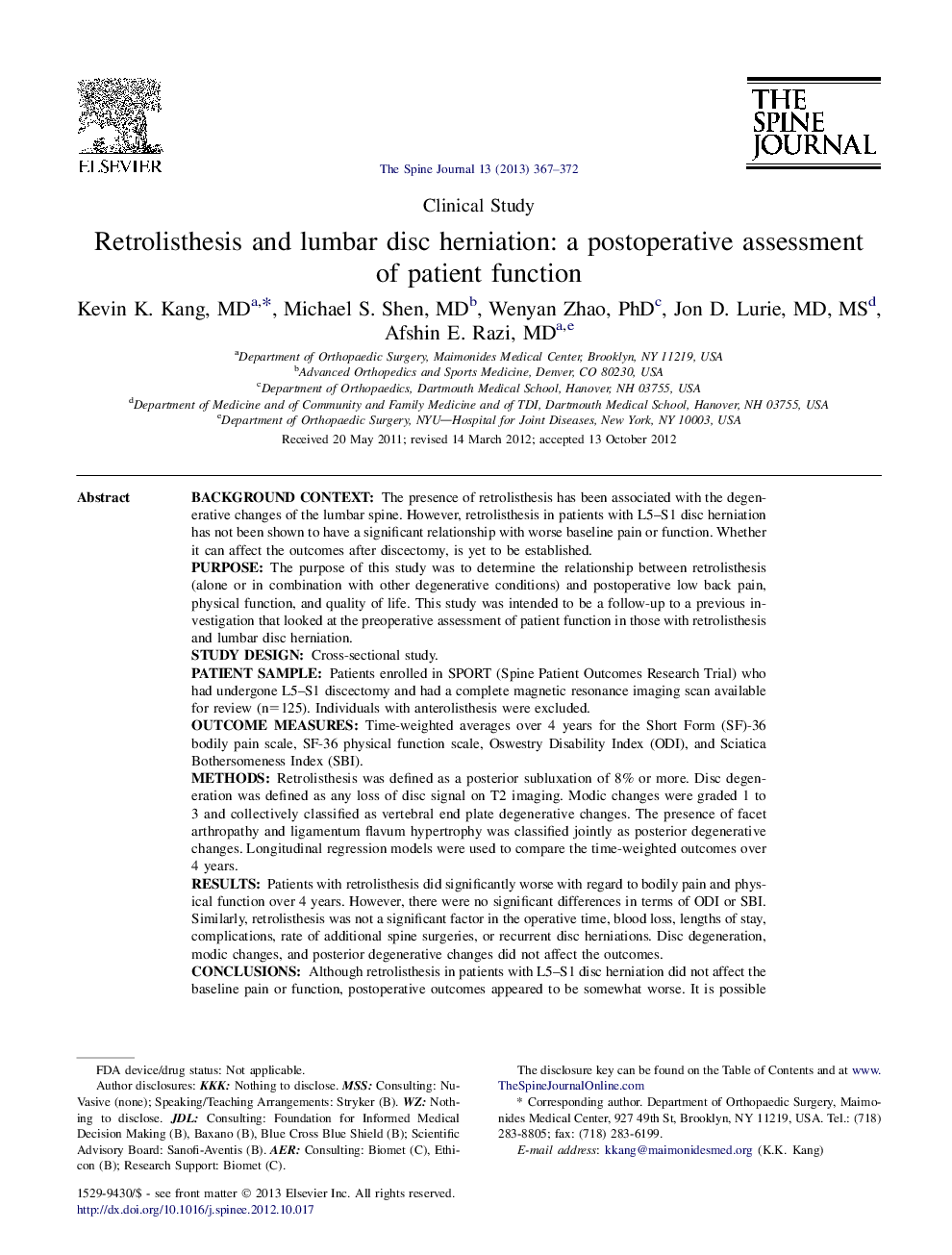| کد مقاله | کد نشریه | سال انتشار | مقاله انگلیسی | نسخه تمام متن |
|---|---|---|---|---|
| 6212658 | 1268587 | 2013 | 6 صفحه PDF | دانلود رایگان |
Background contextThe presence of retrolisthesis has been associated with the degenerative changes of the lumbar spine. However, retrolisthesis in patients with L5-S1 disc herniation has not been shown to have a significant relationship with worse baseline pain or function. Whether it can affect the outcomes after discectomy, is yet to be established.PurposeThe purpose of this study was to determine the relationship between retrolisthesis (alone or in combination with other degenerative conditions) and postoperative low back pain, physical function, and quality of life. This study was intended to be a follow-up to a previous investigation that looked at the preoperative assessment of patient function in those with retrolisthesis and lumbar disc herniation.Study designCross-sectional study.Patient samplePatients enrolled in SPORT (Spine Patient Outcomes Research Trial) who had undergone L5-S1 discectomy and had a complete magnetic resonance imaging scan available for review (n=125). Individuals with anterolisthesis were excluded.Outcome measuresTime-weighted averages over 4 years for the Short Form (SF)-36 bodily pain scale, SF-36 physical function scale, Oswestry Disability Index (ODI), and Sciatica Bothersomeness Index (SBI).MethodsRetrolisthesis was defined as a posterior subluxation of 8% or more. Disc degeneration was defined as any loss of disc signal on T2 imaging. Modic changes were graded 1 to 3 and collectively classified as vertebral end plate degenerative changes. The presence of facet arthropathy and ligamentum flavum hypertrophy was classified jointly as posterior degenerative changes. Longitudinal regression models were used to compare the time-weighted outcomes over 4 years.ResultsPatients with retrolisthesis did significantly worse with regard to bodily pain and physical function over 4 years. However, there were no significant differences in terms of ODI or SBI. Similarly, retrolisthesis was not a significant factor in the operative time, blood loss, lengths of stay, complications, rate of additional spine surgeries, or recurrent disc herniations. Disc degeneration, modic changes, and posterior degenerative changes did not affect the outcomes.ConclusionsAlthough retrolisthesis in patients with L5-S1 disc herniation did not affect the baseline pain or function, postoperative outcomes appeared to be somewhat worse. It is possible that the contribution of pain or dysfunction related to retrolisthesis became more evident after removal of the disc herniation.
Journal: The Spine Journal - Volume 13, Issue 4, April 2013, Pages 367-372
